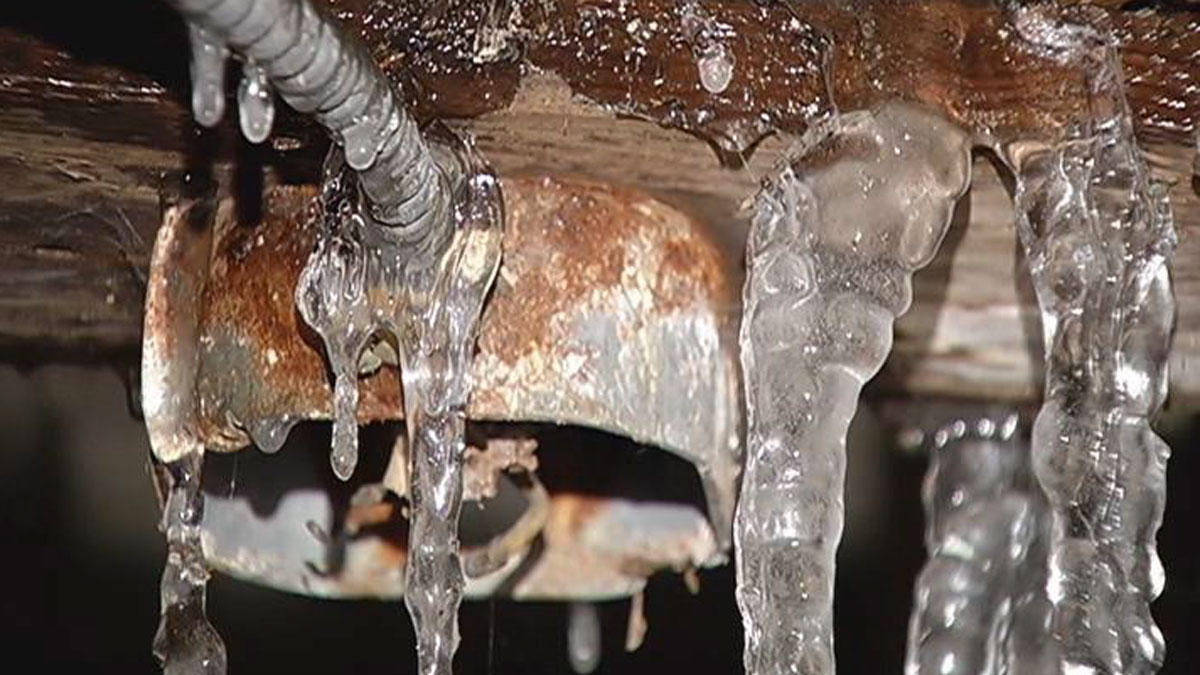Tips for Preventing Frozen Plumbing in Cold Weather: Specialist Insights
Tips for Preventing Frozen Plumbing in Cold Weather: Specialist Insights
Blog Article
This post further down on the subject of How To Avoid Freezing Pipes is quite engaging. Have a go and make your own personal conclusions.

Cold weather can damage your plumbing, especially by freezing pipes. Below's just how to prevent it from happening and what to do if it does.
Introduction
As temperature levels decrease, the danger of icy pipes boosts, possibly causing expensive repair services and water damage. Understanding exactly how to avoid icy pipes is essential for homeowners in cold environments.
Prevention Tips
Shielding susceptible pipes
Cover pipelines in insulation sleeves or utilize heat tape to protect them from freezing temperature levels. Concentrate on pipes in unheated or outside areas of the home.
Heating methods
Maintain indoor rooms appropriately heated, especially areas with plumbing. Open up cupboard doors to enable cozy air to flow around pipelines under sinks.
How to identify icy pipes
Try to find lowered water circulation from taps, uncommon odors or sounds from pipelines, and noticeable frost on revealed pipelines.
Long-Term Solutions
Structural modifications
Take into consideration rerouting pipelines far from exterior walls or unheated locations. Add added insulation to attic rooms, basements, and crawl spaces.
Upgrading insulation
Buy high-quality insulation for pipes, attics, and wall surfaces. Proper insulation assists keep regular temperature levels and reduces the risk of icy pipelines.
Securing Outdoor Plumbing
Yard hoses and exterior taps
Detach and drain pipes garden tubes before winter season. Install frost-proof faucets or cover outdoor taps with insulated caps.
Understanding Icy Pipelines
What causes pipelines to freeze?
Pipes ice up when exposed to temperature levels listed below 32 ° F (0 ° C) for expanded periods. As water inside the pipes ices up, it broadens, taxing the pipe walls and potentially causing them to break.
Threats and damages
Frozen pipes can result in water supply interruptions, building damage, and costly repairs. Burst pipes can flooding homes and trigger substantial structural damages.
Signs of Frozen Water Lines
Identifying frozen pipelines early can prevent them from breaking.
What to Do If Your Pipes Freeze
Immediate actions to take
If you presume frozen pipes, maintain faucets available to alleviate stress as the ice melts. Make use of a hairdryer or towels taken in hot water to thaw pipes slowly.
Final thought
Avoiding icy pipes calls for proactive actions and fast reactions. By recognizing the reasons, indicators, and safety nets, property owners can safeguard their pipes throughout winter.
6 Proven Ways to Prevent Frozen Pipes and Protect Your Home
Disconnect and Drain Garden Hoses
Before winter arrives, start by disconnecting your garden hoses and draining any remaining water. Close the shut-off valves that supply outdoor hose bibs and leave the outdoor faucet open to allow any residual water to drain. For extra protection, consider using faucet covers throughout the colder months. It’s also important to drain water from any sprinkler supply lines following the manufacturer’s directions.
Insulate Exposed Pipes
Insulating your pipes is an effective way to prevent freezing. Pipe insulation is readily available at home improvement stores and is relatively inexpensive. Pay close attention to pipes in unheated areas such as the attic, basement, crawl spaces, or garage. Apply foam insulation generously to create a buffer against the cold. You can also wrap your pipes in heat tape or thermostat-controlled heat cables for added warmth.
Seal Air Leaks
Inspect your home for any cracks or openings that could let in cold air. Seal any holes around the piping in interior or exterior walls, as well as the sill plates where your home rests on its foundation. Additionally, make sure to keep your garage door closed unless you’re entering or exiting. Leaving it open creates a significant air leak that can lead to frozen pipes.
Allow Warm Air Circulation
During cold snaps, it’s essential to allow warm air to circulate evenly throughout your home. Leave interior doors ajar to promote better airflow. Open kitchen and bathroom cabinets to help distribute heat consistently around the rooms. If you have small children or pets, be sure to remove any household chemicals or potentially harmful cleaners from open cabinets for safety.
Let Faucets Drip
A small trickle of water can make a big difference in preventing ice formation inside your pipes. When temperatures drop significantly, start a drip of water from all faucets served by exposed pipes. This continuous flow helps prevent the water from freezing. Additionally, running a few faucets slightly can relieve pressure inside the pipes, reducing the chances of a rupture if the water inside does freeze.
https://choateshvac.com/6-proven-ways-to-prevent-frozen-pipes-and-protect-your-home/

As an avid reader on Preventing and dealing with frozen pipes, I imagined sharing that post was important. If you please set aside a second to promote this entry if you enjoyed it. We take joy in reading our article about Preventing and dealing with frozen pipes.
Click For More Information Report this page